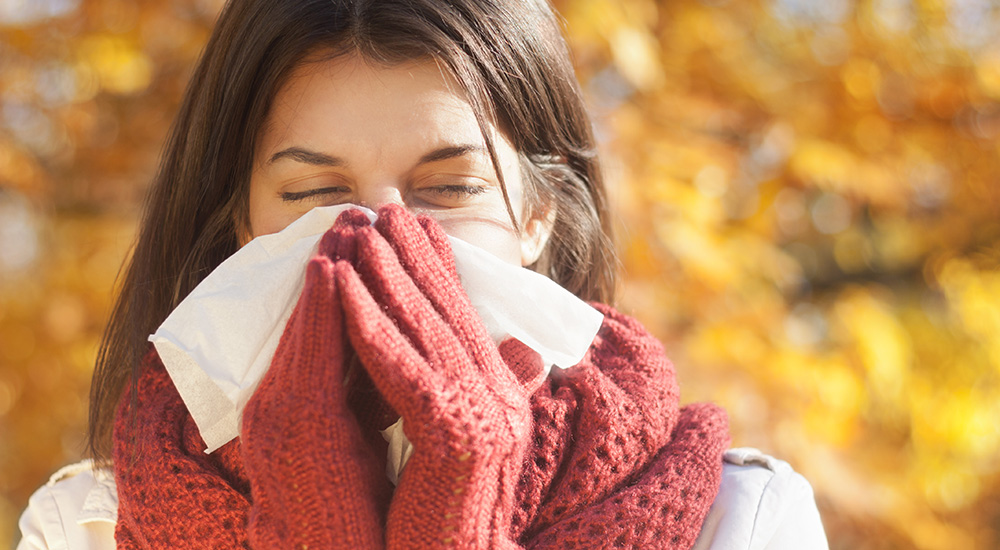
Reduce the Risk of Cold and Flu
With an incubation period of one to four days, how do you know if you have the flu or just the common cold?
You probably already know it is cold and flu season. You may even have a member of your household sneezing, coughing or with body aches and a fever. On average, adults catch two to four colds a year, whereas children can get as many as 10. Furthermore, influenza strikes approximately 20% of all Americans yearly.
Each year the flu vaccination is a combination of various virus strains in an attempt to match the circulating viruses. Unfortunately, that means even those that received the flu shot are susceptible to getting influenza.
With an incubation period of one to four days, how do you know if you have the flu or just the common cold?
The Centers for Disease Control (CDC) acknowledges that it can be difficult to know whether you have a cold or the flu. Both share some similar symptoms, such as tiredness, body aches and sometimes a fever. There are a few distinctions; colds start slowly and increase in intensity. They generally last 10-12 days and include signs of a runny or stuffy nose with a sore throat.
The flu strikes quickly, and the symptoms are more intense — a fever over 100° F and body aches with extreme fatigue.
To help prevent getting influenza, the CDC recommends all individuals get a flu vaccination yearly. Getting a flu shot is particularly important for high-risk individuals; children 2-5 years of age, adults over 65, pregnant women and persons with compromised immune systems. It takes approximately two weeks after getting a flu shot for your body to build enough antibodies to protect you from the influenza virus.
Being vigilant and taking precautions will greatly reduce your susceptibility to the flu virus. Washing your hands thoroughly and frequently for 20 seconds with hot soapy water is one of the easiest ways to prevent becoming infected with and spreading colds and flu. Keep your hands from touching your face — most germs enter through our eyes, nose and mouth.
Remember, when you have a fever, you are contagious! Isolate yourself from others until you have been fever-free for 24 hours to prevent spreading the virus. The above-mentioned items are immediate action steps to reduce the risk of illness, but there are other things we can do to help fight off colds and flu.
Our immune system is our body’s natural mechanism for fighting off infections. When germs invade and cause an illness, the system has failed. Although researchers have not yet unlocked all the mysteries of the human body’s immune system, they do have some suggestions that may boost its effectiveness. The following list may seem overwhelming; but fear not, you do not have to do everything at once. Start with small goals and before you know it, you will be making lasting positive changes. There are several websites such as ChooseMyPlate.gov and Dietary Guidelines-health.gov to support your efforts.
- Eat a diet high in fruits, vegetables and whole grains
- Exercise regularly
- Get sufficient sleep
- Stay hydrated — drink plenty of water
- Manage stress
- Get regular health checkups
- Keep immunizations up to date
- Don’t smoke
- Limit alcohol consumption
- Maintain a healthy weight
- Control blood pressure
Some of these actions may seem unusual for boosting your immune system, yet many parts of your body need to work together for your immune system to be effective. By supporting our body’s natural immune system and applying preventive measures, we can reduce the risk of getting and sharing colds and flu.
Editor’s note: Kathy DiGuiseppe is the nutrition links regional coordinator of the Food, Families & Health Department at Penn State University.



